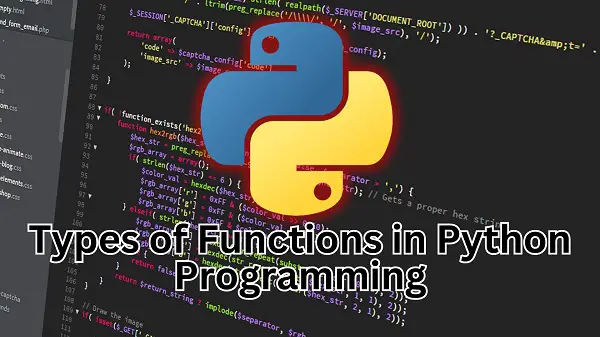Python, known for its simplicity and versatility, offers various tools and constructs to make programming more efficient and expressive. Functions play a crucial role in Python programming, allowing developers to organize code, reuse logic, and build modular applications. Understanding the different types of functions in Python is fundamental to mastering the language's capabilities and writing clean, maintainable code.
- Built-in Functions:
Python provides a rich set of built-in functions that are readily available for use without requiring any additional definitions. These functions cover a wide range of operations, including mathematical calculations, string manipulation, data type conversions, and input/output operations. Examples of built-in functions include `print()`, `len()`, `input()`, `max()`, `min()`, `sum()`, `str()`, `int()`, etc. They serve as foundational tools for writing Python code efficiently.
- User-defined Functions:
User-defined functions allow developers to create custom functions tailored to specific requirements. These functions encapsulate a block of code that performs a particular task and can be reused throughout the program. Defining functions helps in promoting code reusability, enhancing readability, and simplifying program maintenance. User-defined functions are declared using the `def` keyword followed by the function name, parameters, and a block of code enclosed within indentation.
Example:
“`python
def greet(name):
print(“Hello, ” + name + “!”)
“`
- Anonymous Functions (Lambda Functions):
Lambda functions, also known as anonymous functions, are concise and single-expression functions that do not require a formal definition using the `def` keyword. They are defined using the `lambda` keyword and are commonly used in scenarios where a small function is needed for a short duration. Lambda functions are often used in conjunction with built-in functions like `map()`, `filter()`, and `reduce()` to perform operations on iterables.
Example:
“`python
double = lambda x: x * 2
“`
- Recursive Functions:
Recursive functions are functions that call themselves directly or indirectly to solve a problem. They are particularly useful for solving problems that can be broken down into smaller, similar sub-problems. In Python, recursion allows for elegant solutions to complex problems, but it requires careful handling to avoid infinite loops. A recursive function consists of a base case that defines the termination condition and one or more recursive cases that reduce the problem into smaller instances.
Example:
“`python
def factorial(n):
if n == 0:
return 1
else:
return n * factorial(n-1)
“`
- Higher-order Functions:
Higher-order functions are functions that can accept other functions as arguments or return functions as results. They enable functional programming paradigms such as map-reduce, filter, and apply. Python supports higher-order functions, allowing developers to write more concise and expressive code. Common examples of higher-order functions in Python include `map()`, `filter()`, `sorted()`, and functions from the `functools` module like `reduce()`.
Example:
“`python
def apply_operation(operation, x, y):
return operation(x, y)
def add(x, y):
return x + y
result = apply_operation(add, 5, 3)
“`
Conclusion:
Functions are a cornerstone of Python programming, offering a powerful mechanism for code organization, reuse, and abstraction. Understanding the different types of functions in Python, including built-in functions, user-defined functions, lambda functions, recursive functions, and higher-order functions, empowers developers to write more efficient, modular, and expressive code. By leveraging the diverse capabilities of functions, Python programmers can tackle a wide range of problems with elegance and simplicity.





